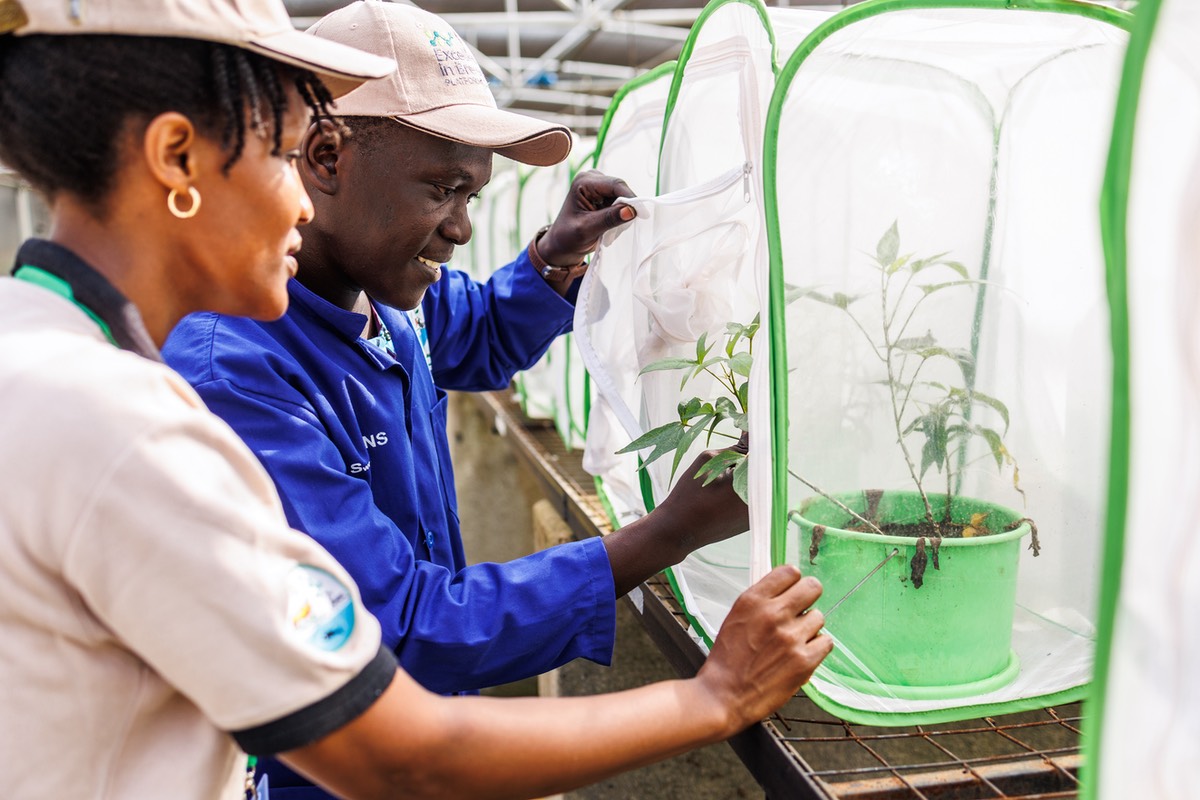
Humanity’s future is intertwined with the earth’s plants. We need plants for livelihoods, for medicines, for manufacturing, for services such as recycling carbon dioxide. And most vitally, we need them to feed our growing populations. But climate change and population growth are making crops increasingly precarious for smallholder farmers in the developing world – and for the people they feed. They face erratic weather, pests, disease, resource scarcity, and intimidating demographic changes.
But humans can improve plants to meet these challenges. That’s exactly what crop breeding has been doing for thousands of years. Breeders practice the science of nudging the genetic potential of plants to our advantage. Modern breeding programs are working on ways to speed up and improve the development of more resilient, high-yielding and consumer demanded varieties. CGIAR has been doing so for over five decades. In fact, our global network of research centers catalyzed the Green Revolution, providing high-yielding wheat and rice varieties that fed hundreds of millions of people on the verge of famine.
CGIAR continues to lead public breeding efforts, along with its national agricultural system and extension service (NARES) partners. Breeding pipelines have brought large-scale benefits for the developing world through products such as high yielding rice varieties including hybrid rice in China and disease resistant rice in West Africa; biofortified sweet potatoes in Zimbabwe; higher yielding and disease resistant wheat varieties in Nepal; and expanding zinc-fortified wheat globally – to name only a few. Each variety is helping farmers deliver food products that consumers demand, while helping them overcome climate and environmental challenges.
But many farmers are still growing varieties that are decades old – plants that cannot fight off the newest threats. And the breeding methods that achieved the previous generations of improved varieties will not sufficiently deliver the complex traits needed now. Public breeding programs have been slow to adapt their programs and adopt new technologies. CGIAR’s efforts have sometimes been scattered and inefficient, across separate Centers and programs, with insufficient focus on distinct consumer preferences and markets. The public breeding programs serving low- and middle- income countries must adopt the best practices and technologies to meet current challenges.
A new initiative to accelerate results in farmers’ fields
To make sure this happens, CGIAR’s new Accelerated Breeding Initiative is streamlining breeding across CGIAR and NARES to bring better results, faster, in farmers’ fields. The overarching aim is to ensure programs deliver higher rates of genetic gain in the form of nutritious, farmer-preferred varieties, resulting in better varieties and ultimately decreasing the average age of varieties in farmers’ fields.
How can we make sure breeders deliver on these goals? First, breeding programs need to refocus their objectives to ensure all efforts are in service of meeting farmers’ needs. Programs are developing and adapting product profiles targeted to real farmers and customers – including the particular needs of women – based on the best market intelligence. Pipelines will be restructured and optimized to align to the prioritized set of product profiles while best leveraging common trait requirements and resources. Implementing these product profiles will be the guiding force for all breeding decisions within CGIAR-NARES-SME breeding networks.
Second, CGIAR/NARES will reorganize themselves into more effective, efficient, and agile teams with crystal-clear roles, responsibilities, and accountability – all laser-focused on breeding outcomes. Using a “form follows function” approach, Accelerated Breeding will map expertise and activities onto clearly defined functions of the breeding pipeline from trait discovery through population improvement to variety validation. Transparent operations, decision-making and M&E will promote a culture shift towards co-ownership of breeding outcomes and more empowered NARES.
Third, we will continue the transformation of breeding networks into inclusive, impactful partnerships, with stronger NARES and SMEs partners. This means customized capacity building, standardized KPIs, and dividing labor and resources across partners according to comparative advantage. A more functional partnership model will mean NARES take greater ownership of germplasm and greater responsibility for downstream parts of the breeding pipeline, as well as managerial roles. Stronger partners mean more ownership and capacity to rapidly deploy improved crop varieties and drive variety turnover.
Fourth, Accelerated Breeding aims to increase the speed and accuracy of delivering novel and high-value traits to breeding teams. This means sharpened investment in trait discovery and deployment (TD&D) activities to better respond to trait needs of the core breeding pipelines and the markets they serve. TD&D pipelines will be redesigned based on current best practices and principles of quantitative genetics.
And finally, the work will come together at the breeders’ level, by accelerating the work of CGIAR and national breeding pipelines based on best practices, quantitative genetics principles, and delivery of product profile characteristics. By leveraging tools and services developed by the Breeding Resources Initiative, programs will deliver better targeted and market-demanded varieties – and modernized breeding programs that deliver greater rates of genetic gain per dollar invested.
Together, delivering what farmers want and need
To meet modern challenges, we must target traits such as yield, heat and drought tolerance, and improved nutrition – while not forgetting traits required for food preparation and processing. Replacing current varieties will require Accelerated Breeding’s ambitious approach and vision.
CGIAR’s rich and impactful breeding system has been readying for this next phase by taking important steps in realigning breeding programs, incentivizing the delivery of higher genetic gain, adopting new technologies, and building NARES breeding networks and capacity. And now we are moving forward as ‘One CGIAR’ – implementing the best improvements the breeding domain has to offer.
Armed with continually improving crop varieties, the world will be better able to meet the challenges of nourishing growing populations in a climate-challenged world. The CGIAR System is ready, and so are smallholder farmers and consumers across the developing world.
Authored by Accelerated Breeding leads Michael G. Quinn, Director, CGIAR Excellence in Breeding Platform (EiB), and Clare M. Mukankusi, Plant Breeder, Alliance of Bioversity International and CIAT, with Adam Hunt, Communications Lead, EiB.
Header photo by J. Martin/EiB/CGIAR.
